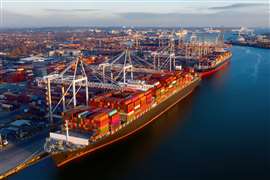Construction Products Regulation threatens contractor-made elements
03 June 2010
The new Construction Products Regulation could require contractors to CE mark building components that they make themselves. This would require them to put products through costly conformity assessments and tests.
This potential requirement in the laws resurface after Europe's Competitiveness Council, part of the Council of Ministers, accepted modifications to the legislation put forward by Member States and the European Commission. Under the new wording of the law, construction products made by contractors either on-site or off-site - such as pre-cast concrete elements - may be brought under the scope of the regulation.
If this were to happen, contractors would have to bear the expense of putting the elements through the Construction Products Regulation approval mechanism, which would involve expensive tests and assessments. This would also imply an unnecessary 'double liability', as the contractor would be responsible for the performance of each individual product as well as the structure they were used in.
The European Construction Industry Federation (FIEC) has proposed an amendment to the Regulation that would exempt products made by the same 'economic operator' that uses them in a structure.
A statement from FIEC said, "There should be no distinction between a construction product manufactured on-site and the same product manufactured by the same contractor off site as long as the same company that manufactures the product is also liable for the works where it is being installed."







